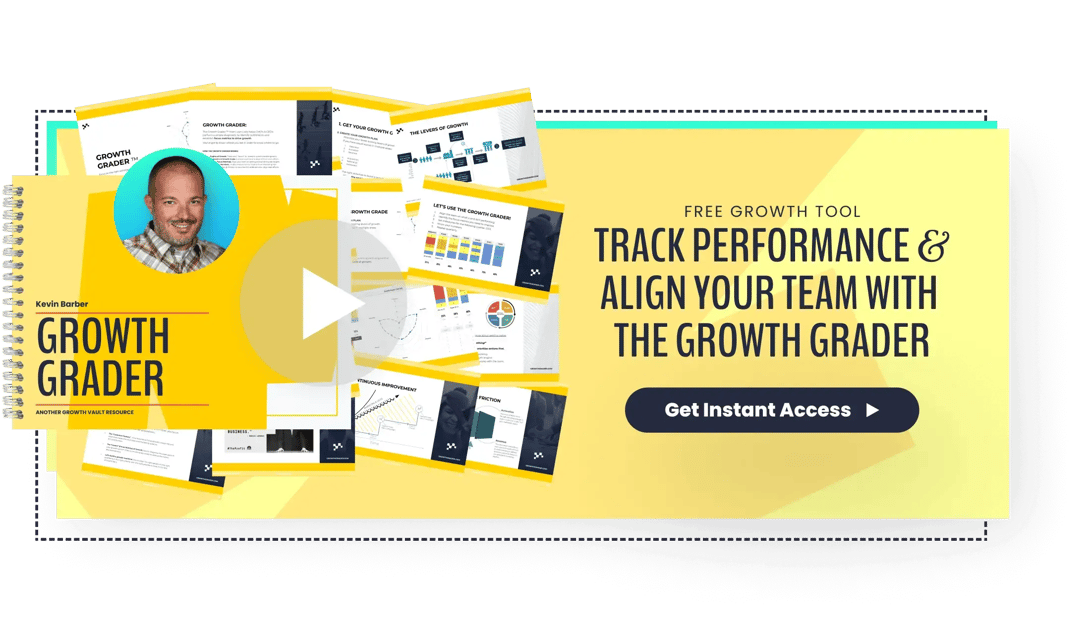
How We Optimize the 5 Customer Journey Stages to Accelerate Growth
What would be your response if I told you there’s a framework we use to drive 10X revenue growth for our clients?
- Awesome! Tell me more.
- BS. I don’t believe you.
If your response is “Awesome! Tell me more,” you’re in luck.
At Lean Labs, we specialize in helping B2B SaaS startups profitably acquire customers and scale. We guarantee 10X growth for our clients.
And we do it by optimizing the five stages of the customer journey. This isn’t a theoretical framework–it’s a proven process.
In this article, we’ll show you how we use this powerful strategy to optimize each stage of the customer journey.
We’ll also provide actionable tips on navigating each stage and accelerating growth in your business.
Oh, and there’s a bonus. You’ll not only have a deeper understanding of the customer journey, but you’ll also get free access to our Growth Playbook, packed with even more strategies for success.
Activation
In part two of the consideration stage, you’re nurturing MQLs to become sales-qualified leads (SQL). This stage is easier to optimize if you have quality leads engaging with your content and moving along the customer journey.
Think of an SQL as an MQL that takes a sales action, such as scheduling a demo or booking a call. To optimize this stage, you must look at your sales pipeline and track appropriate metrics.
For example, you could track pipeline velocity. How quickly do leads move through your sales pipeline?
This metric indicates your sales pipeline performance. A slower velocity highlights friction points. A high velocity means a smoother process.
You’ll also want to track conversion rates from MQLs into SQLs and customer acquisition costs (CAC).
Pro tip: For more on Sales Pipeline metrics, bookmark this link for your next read: The 10 Sales Pipeline Metrics that High-Growth Companies Track
Where are the friction points? From years of working with B2B SaaS brands, the most common friction points are brochure websites that don’t resonate with customers, weak lead magnets, and lack of differentiation.
Sound familiar? We can help.
3. Purchase
Getting a customer on a call is the name of the game when you have a product or service that solves their needs.
Once a customer decides to get on a call with your sales team, they should already know how you can solve their problem, and now it’s time to convince them to choose you over the alternatives and close the deal.
How? Make it easy to book a call. You don’t want back-and-forth conversations. Send a calendar link to available times so they can book a slot.
For B2B SaaS companies, making this stage frictionless is crucial. You could:
- Offer a free trial or demo. Allowing customers to try out the product or service before committing to a purchase can help build trust and credibility.
- Provide detailed pricing information, such as a breakdown of costs per user or the length of the contract, to help customers make an informed decision.
- Use a dedicated sales team to help customers with any questions or concerns before making a purchase and assist with negotiations.
- Use case studies and testimonials from other businesses in the same industry to help customers understand the value of the product or service and how it has helped other companies to solve similar problems.
- Use contract management software to automate contract creation, signing, and tracking, making the purchasing process as smooth as possible.
What Can You Do to Optimize This Stage?
To optimize this stage, we look at the number of SQLs we close compared to the number of SQLs in our pipeline. Again, we can reverse engineer the sales process and look for friction, gaps, and opportunities.
Pro tip: Objections are concerns in disguise. For example, “Now is not a good time,” is likely, “This meeting isn’t worth my time.”
One of the most important metrics to track here is customer acquisition cost (CAC). It’s the dollar amount it costs to acquire new customers. You want to lower your CAC and can do so by targeting best-fit leads instead of poor leads.
Other ways include improving conversion rates or retargeting previous customers.
Another essential metric is the reasons you lose deals. Why do some sales fall through the cracks? Of course, you’re not going to win every contract, but you should always find out why. You can tie this to your close rate.
4. Retention
It all starts with your customer’s experience. And not just once they have your product or use your service.
Everything leading up to becoming a customer counts, too. If they had an easy time navigating your website, enjoyed using your lead magnet, and felt excited on the sales call, you’re already developing a great relationship.
If you have a product that’s intuitive and easy to use, you can let your customers experience it for themselves. But if your product requires some hand-holding, you’ll need to provide robust training materials and stellar onboarding.
It’s best practice to provide excellent customer service. Be available. If you say you’ll respond to all queries and concerns within 24 hours, do that. Resolve issues quickly and go above and beyond.
At Lean Labs, we do everything we can to fulfill our promises. So much so, we promise value over profit. Meaning we never stop until our clients are outselling and outgrowing the competition. If we don’t provide the results we said we would, we do extra work for free.
There are a couple of ways to track retention.
One is through customer lifetime value (CLV). CLV is the total revenue your business can expect from a single customer throughout their time using your product or service.
Considering it costs up to 5 times more to acquire a customer than to keep current customers, this is something you want to optimize. In turn, it should reduce churn, which you also want to track. Customer churn happens. What’s essential is that you find out why.
What can you do to prevent other customers from leaving for similar reasons? Get constant feedback and communicate proactively. Communication goes a long way.
5. Advocacy
In the advocacy stage, your happy customers spread the word about how awesome your solution is.
Reputation drives revenue. With a high number of excellent reviews and 5-star ratings, you put yourself in a position of authority and make it easy for customers to reach out.
Much of the buyer journey happens before customers talk to sales, so the better your reputation, the more customers you’ll attract.
You might be thinking, “Well, yeah, obviously, we need reviews and referrals.” But many businesses focus so heavily on marketing and sales that they forget to ask for reviews and referrals.
Yet happy customers are your best marketers.
If potential customers see that Craig, who also works in the same industry or has the same challenges, found success using your product, they’re halfway to becoming customers.
Something to consider here is that it takes 12 positive customer experiences to make up for one negative experience. Yikes.
And a whopping third of customers would consider switching companies immediately after poor service.
Conversely, 69% will spend more with a company with good customer service. Using customer feedback is a way to optimize the customer experience. You can run small experiments to gather data.
For example, we recently ran a free challenge and asked participants to rate their experience after.
On average, participants felt the training they received during the 3-day challenge to be worth $21,000. Considering they got this training for free, what do you think they go away thinking about us?
That we provide massive value, we know what we’re talking about, and we can help them win.
Key takeaway: Provide massive value, keep customers happy, and ask for reviews and referrals.
None of the Levers Work Without a Strategy
You can optimize at least one thing at each customer journey stage. And each stage is linked to the next. Much like we discussed earlier, with levers working together to produce massive momentum, you need something to tie all of this together.
It starts with a killer go-to-market strategy and then marketing campaigns that push the needle forward. You can’t be random with marketing, flipping from one tactic to the next.
Set SMART goals and optimize each stage of the journey.
We like the idea of a roadmap. At Lean Labs, we’re deliberate about moving prospects from one stage to the next.
Getting prospects to say ‘yes’ multiple times and with as little friction as possible is the best way to get them on a call and convert them to customers.
The 5 Customer Journey Stages That Accelerate Growth
Whether you think in stages or levers, remember that each growth lever or stage feeds the next.
To optimize each stage, we have plays that we use and continually develop. We’re not afraid to try new things and pivot if something isn’t working. You need a growth mindset to do similar things.
Our framework works. This isn’t theoretical. We use the six levers of growth to generate $100 million in revenue and help clients acquire over $90 million in funding.
When our clients hire us, we use our free tool, the Growth Grader, to get a detailed understanding of the health of each one of the six levers of growth.
Then, we know without a doubt which levers need attention and apply our best plays to optimize that lever.
If you want to see how we drive growth for our clients, peek behind the curtain, and steal our most valuable plays, get your free copy of the Growth Playbook here!
.png?width=1920&height=1080&name=B2B%20Customer%20Journey%20Stages%20v1%20(1).png)






